Fan Stadium

How can a sports stadium be designed to enhance fan engagement and experience ?
Designing a sports stadium to enhance fan engagement and experience requires careful consideration of various factors. These include seating arrangements, technology integration, amenities, and more. Key strategies for designing an engaging stadium involve creating premium seating options near the field, ensuring good viewing angles, providing comfortable seating, offering strong Wi-Fi connectivity, developing mobile apps, installing large screen displays, integrating interactive features, offering a variety of food and beverage options, ensuring ample restroom facilities, creating merchandise stores, designating family-friendly areas, using music and lighting effects to create an energetic atmosphere, encouraging fan interaction through contests and giveaways, and planning themed events around holidays or special occasions. By prioritizing these factors, you can ensure that your sports stadium becomes a destination for sports enthusiasts seeking an exceptional experience.
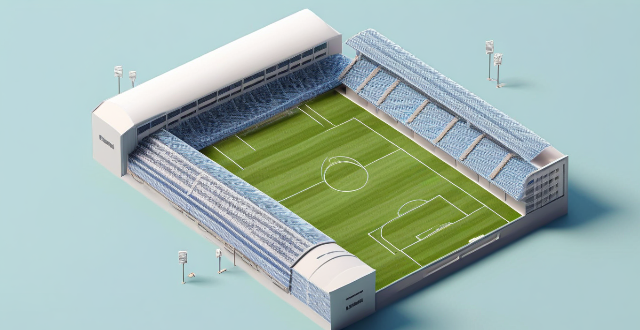
What role does technology play in the design of a sports stadium ?
Technology has revolutionized the design of sports stadiums, enhancing fan experience with interactive displays, mobile apps, and augmented reality. It also improves functionality and safety through advanced lighting systems, security cameras, and smart building management systems. As technology evolves, we can expect more innovative solutions that will further transform the way we enjoy sports events.
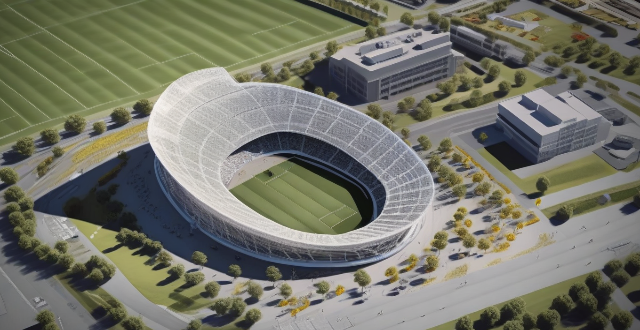
What are some innovative features that can be included in modern sports stadium design ?
Innovative features in modern sports stadium design include sustainable construction, advanced technology, enhanced fan experience, safety and security measures, flexible design, and environmentally conscious facilities. These features aim to improve the fan experience, increase sustainability, and ensure the safety of attendees.

How does the type of sport influence the design of a sports stadium ?
The type of sport played in a stadium significantly influences its design, with each sport having unique requirements and considerations. The size and layout of the stadium must accommodate the specific dimensions needed for the sport, such as a larger soccer field compared to a basketball court. The seating capacity is also influenced by the popularity of the sport, with larger stadiums often required for sports with large fan bases. Facilities and amenities within the stadium are tailored to the sport, including specialized equipment or technology like scoreboards for sports that require them. Acoustics play a role in some sports, with quiet environments necessary for tennis matches and louder environments for football games. Safety and security measures are also tailored to the sport, with additional padding or barriers needed for contact sports and extra security measures for sports that attract rowdy fans. In conclusion, the design of a sports stadium is heavily influenced by the type of sport being played, requiring unique considerations for each sport's needs in terms of size, layout, facilities, acoustics, and safety.
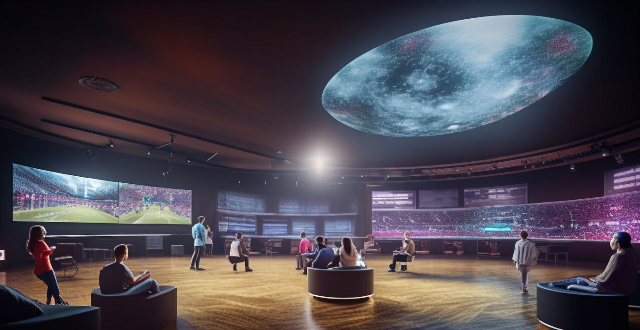
How has augmented reality transformed fan engagement in sports ?
Augmented Reality (AR) is revolutionizing fan engagement in sports by offering immersive experiences that blend physical and digital elements. AR enhances viewing experiences with interactive overlays and virtual seats, enables in-game interaction through team and player interaction and game day activities, boosts merchandise and sponsorship opportunities with interactive ads and virtual try-ons, aids navigation and wayfinding in stadiums, and encourages social sharing through augmented selfies and virtual reality social spaces. These advancements are transforming the way fans connect with sports and teams, creating more engaging and interactive experiences.

What is the importance of lighting in sports stadium design ?
Lighting plays a crucial role in the design of sports stadiums, ensuring safety and visibility for athletes and enhancing the overall experience for spectators. Proper lighting allows athletes to clearly see the playing field and make accurate judgments about distance, speed, and direction, leading to better performance. Well-designed lighting systems also minimize glare and reflections, reducing eye strain for spectators and providing an enjoyable viewing experience. Energy efficiency and cost savings are important considerations in sports stadium lighting design. LED lighting technology consumes less energy compared to traditional lighting sources and has a longer lifespan, reducing maintenance costs and frequency of replacement. Smart lighting systems can adjust brightness levels based on natural light availability and be controlled remotely, further reducing energy consumption. Lighting also plays a role in creating atmosphere and ambiance within sports stadiums. Different colors of lighting can evoke different emotions among spectators, creating a unique atmosphere for each event. Customized lighting schemes can be used to promote team colors or sponsor logos, enhancing brand recognition. Advanced lighting systems can create dynamic light shows during halftime or between events, adding excitement and entertainment value. Interactive lighting features can engage spectators and create a sense of community within the stadium. In conclusion, lighting is a vital aspect of sports stadium design that ensures safety and visibility, promotes energy efficiency and cost savings, and enhances the overall atmosphere and ambiance of the event. As technology continues to advance, it is essential for stadium designers to stay updated with the latest trends and innovations in lighting systems to provide the best possible experience for both athletes and spectators alike.
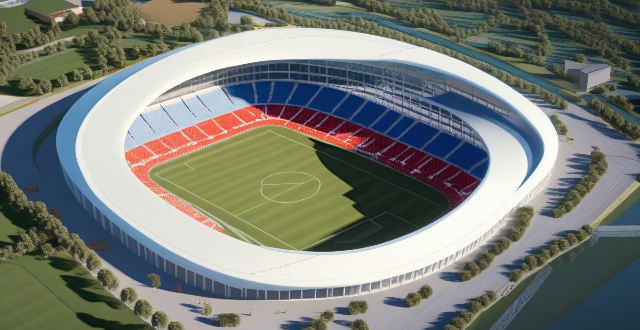
What are the key factors to consider when designing a sports stadium ?
When designing a sports stadium, several key factors must be considered to ensure its success and functionality. These include location and accessibility, capacity and seating arrangement, facilities and amenities, technology and infrastructure, and environmental sustainability. The stadium should be easily accessible by public transportation and have adequate parking spaces. It should also have clear pedestrian access points and designated areas for disabled spectators. The size of the stadium should match the expected number of spectators, and the seating layout should provide good sightlines and comfortable viewing angles. Concessions, restrooms, first aid stations, and security measures should also be taken into account. Modern technology like scoreboards, Wi-Fi connectivity, and sound systems are essential for enhancing the fan experience. Finally, environmental sustainability features such as energy efficiency, water conservation, and waste management systems should be incorporated into the design to minimize the stadium's impact on the environment.
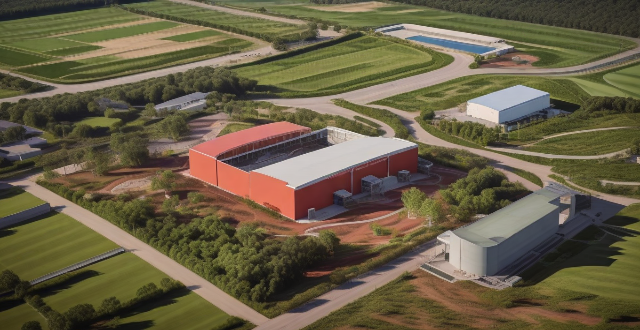
What is the connection between deforestation for stadium construction and increased greenhouse gas emissions ?
Deforestation for stadium construction leads to increased greenhouse gas emissions by reducing carbon sinks, disturbing soil, consuming energy during construction and operation, altering albedo, increasing transportation-related emissions, generating waste, affecting biodiversity, and changing water regulation. Mitigation strategies include sustainable design, using renewable energy, promoting public transportation, carbon offsetting, and effective waste management.

Can you provide examples of successful fan support campaigns for different artists ?
Successful fan support campaigns for various artists have been instrumental in promoting their work and achieving their goals. Examples include Taylor Swift's "1989" world tour, Beyoncé's "Lemonade" release, and BTS's "Love Myself" anti-violence and anti-bullying campaign. These campaigns engaged fans through social media, exclusive content, and community building, resulting in increased album sales, critical acclaim, and positive change.

How do fan support events differ between music genres or cultures ?
The text discusses the variations in fan support events across different music genres and cultures. It highlights how these events differ in terms of concert tours, meet and greets, signings, fan clubs, and online communities. The examples provided illustrate the unique traditions and practices associated with each genre or culture, showing how artists connect with their audiences in diverse ways.
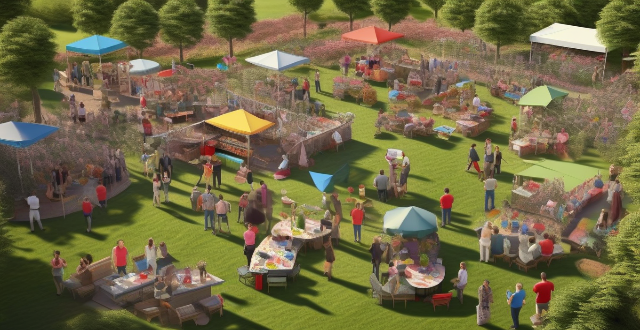
How do fan support events impact an artist's success and popularity ?
Fan support events play a crucial role in shaping an artist's success and popularity by increasing visibility, strengthening fan loyalty, providing monetization opportunities, and enhancing reputation and credibility. These events offer platforms for fans to connect with artists, generate media coverage, create social media buzz, foster personal connections, offer exclusive experiences, sell merchandise, increase ticket sales, gain industry recognition, and influence critic opinions. Overall, fan support events are essential components of an artist's career development strategy.

What are the most common types of fan support activities for musicians ?
Musicians depend on various fan support activities to build their careers, including attending concerts, streaming music, following on social media, participating in online communities, writing reviews, creating fan art, and organizing fundraising campaigns. These activities help generate income, increase exposure, strengthen connections with fans, and provide valuable feedback and support for musicians' endeavors.
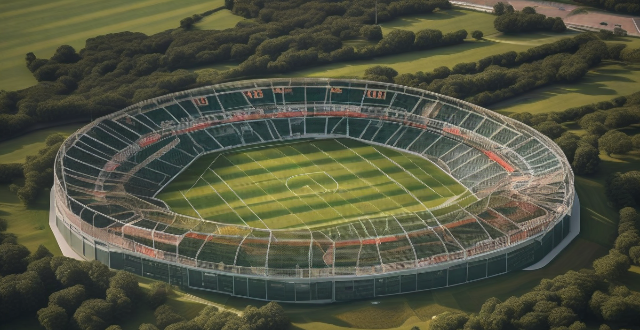
Where will the next Summer Olympics football tournament be held ?
The next Summer Olympics football tournament will take place in Tokyo, Japan from July 23 to August 8, 2021. The matches will be played at several stadiums across Japan, including Saitama Stadium, Sapporo Dome, International Stadium Yokohama, Nippon Gaishi Stadium, and Kashima Soccer Stadium. There will be 16 men's national teams and 12 women's national teams competing for gold medals in their respective categories. Due to the COVID-19 pandemic, there have been some changes to the schedule and format of the tournament, including limited spectators, staggered scheduling, and regular testing for all participants.

What are some creative ways to organize a fan support event ?
Organizing a fan support event can be a fun and creative way to engage with your audience and create a sense of community around your brand or organization. Here are some creative ways to organize a fan support event: 1. Hosting themed parties, such as costume contests or trivia nights. 2. Organizing virtual events where fans can participate from home, such as live streaming the event on social media platforms or creating interactive experiences. 3. Collaborating with other brands or organizations to expand your reach and create unique experiences for fans. 4. Hosting contests and giveaways to engage fans and create excitement around your event. 5. Personalizing the event experience for fans, such as offering personalized merchandise or creating custom-made content featuring fans' names. 6. Creating interactive installations or exhibits related to your brand or organization. 7. Involving the local community in your fan support event to create a sense of belonging and connection among fans.
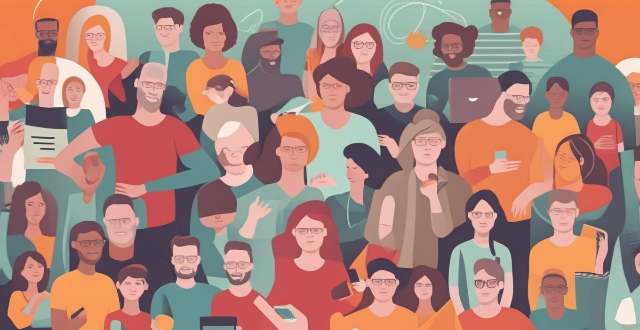
What role does social media play in organizing and promoting fan support events ?
Social media is a crucial tool for organizing and promoting fan support events, connecting fans, promoting events, engaging fans, and measuring success. It allows fans to form online communities dedicated to their favorite artists or sports teams, share news, updates, and information about upcoming events. Artists, sports teams, and event organizers can use social media to announce upcoming events, share details about the event, and encourage fans to attend. Social media also provides opportunities for fans to engage with their favorite artists or sports teams in meaningful ways, such as participating in contests and giveaways or sharing user-generated content related to the event. Finally, social media provides valuable data that can be used to measure the success of fan support events by tracking metrics such as likes, shares, comments, and reach.

How has AI influenced the way we watch and engage with sports ?
Artificial Intelligence has transformed the way we watch and engage with sports. AI technology has improved the viewing experience, provided valuable insights into sports performance and strategy, and enhanced fan engagement through features like virtual reality, real-time highlights, personalized content, player performance analysis, game strategy analysis, injury prevention, fan interaction, gamification, and augmented reality. These advancements have revolutionized the sports industry and will continue to shape our relationship with sports in the future.

How has technology changed the way we experience sports ?
Technology has revolutionized the way we experience sports, from enhanced viewing experiences to instant access to information, improved training and performance, and increased fan engagement and interaction. High-definition broadcasts, multi-angle replays, and interactive platforms have made watching sports more immersive. Live score updates and in-depth analysis provide fans with real-time information. Advanced analytics and wearable technology help teams and athletes optimize training and performance. Virtual reality and social media create a sense of community and foster discussions beyond the traditional boundaries of the stadium. Overall, technology continues to shape the future of sports in exciting new ways.
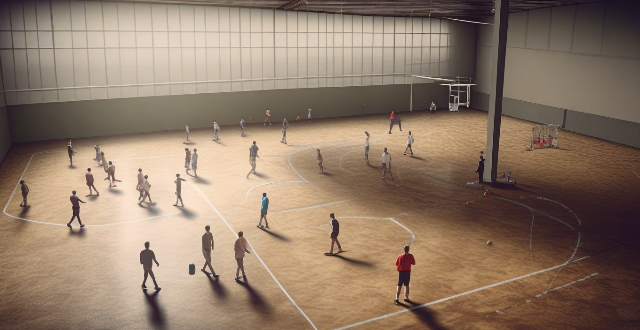
Does sports sponsorship have an impact on the fan engagement and loyalty towards a team or event ?
The influence of sports sponsorship on fan engagement and loyalty is multifaceted, with potential positive impacts such as enhanced brand visibility, improved attendance and viewership, and community involvement. However, there are also potential negative effects like overcommercialization concerns and misaligned brand values. The impact can vary based on factors including team performance and fan demographics.
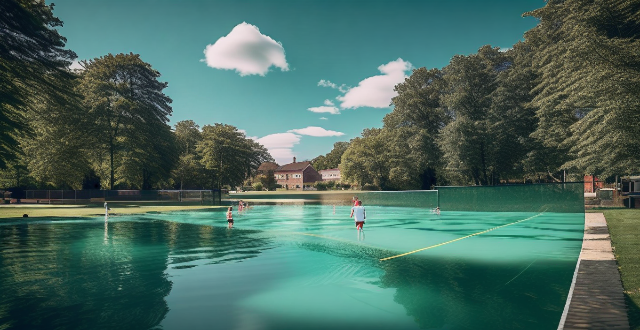
In what ways can AI enhance the fan experience at sporting events ?
AI is enhancing the fan experience at sporting events by offering personalized, interactive, secure, and accessible experiences. It can create customized highlights, provide real-time analytics, offer immersive VR/AR experiences, power interactive apps, enhance security through facial recognition and crowd management, and improve accessibility with live captioning, translation, and visualization tools for blind fans. These advancements are making sports more enjoyable and safer for fans worldwide.
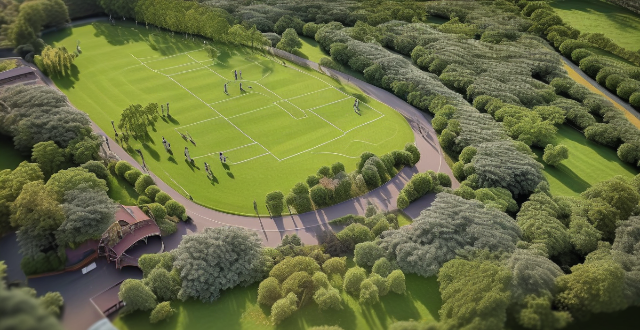
How does the media influence the perception of different sports and their respective fan bases ?
The media significantly impacts sports perception and fan bases by focusing on popular sports, creating celebrity athletes, promoting major events, fostering online communities, and shaping public opinion. This influences how people engage with and view various sports.

What are the benefits and drawbacks of virtual fan support events compared to in-person events ?
Virtual fan support events provide global accessibility, cost-Virtual fan support events provide global accessibility, cost- benefits but face challenges like limited cost-effectiveness, and safety benefits but face challenges like limited personal interaction and technical issues. Finding a balance between virtual and in-person events is crucial for meaningful connections.
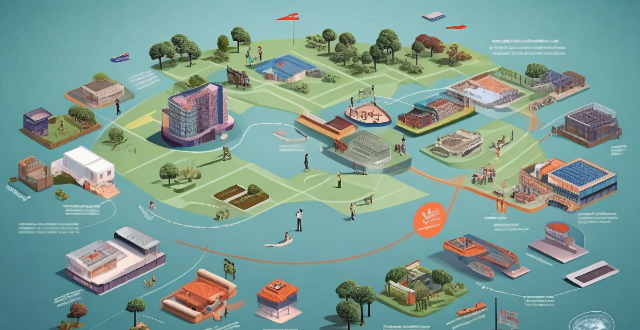
How does the globalization of sports media affect fan engagement and consumption patterns ?
The globalization of sports media has significantly impacted fan engagement and consumption patterns. Enhanced accessibility through live streaming, on-demand content, and digital platforms has revolutionized how fans watch and interact with sports. Diverse content offerings, including international coverage and multilingual broadcasts, have expanded the reach of sports to global audiences. Personalized experiences through customized content and fantasy sports have increased fan engagement. Additionally, virtual events, e-sports, and online tournaments provide new opportunities for fans to participate and engage. Changes in consumption patterns, such as a shift towards digital subscription models and online merchandise shopping, reflect the evolving landscape of sports media. Overall, the globalization of sports media has transformed the way fans consume and enjoy sports worldwide.
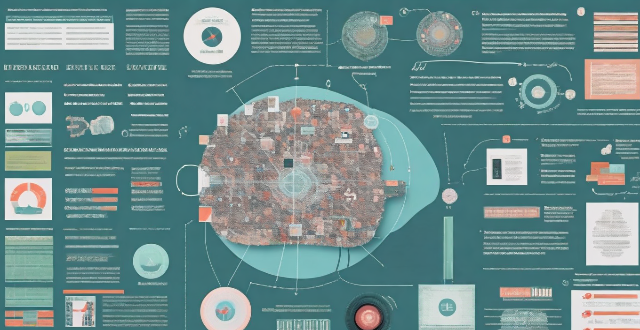
How does sports culture shape the media industry ?
Sports culture significantly impacts the media industry by influencing content, formats, and business models. This influence is evident across various media platforms, including news coverage, advertising strategies, social media engagement, and more. The prioritization of sports news, specialized reporting, live broadcasting, brand integration, athlete endorsements, and fan interaction are just some examples of how sports culture shapes the media landscape. Additionally, the growth of fantasy sports and gamification further integrates sports into media consumption. As both industries continue to evolve, their relationship is expected to grow stronger, with sports culture remaining a central force in shaping the media industry.

What strategies can sports organizations employ to maximize revenue generation while maintaining fair competition within their respective leagues ?
Strategies for maximizing revenue generation in sports organizations include securing sponsorship and partnership deals, implementing dynamic ticket pricing models and fan loyalty programs, and managing player salaries and benefits effectively. These strategies aim to promote fair competition within leagues while generating additional revenue streams through corporate sponsorships, local business partnerships, media rights agreements, technology collaborations, merchandise partnerships, demand-based pricing, early bird discounts, package deals, rewards programs, membership clubs, community outreach programs, performance bonuses, contract incentives, health insurance and retirement plans, youth academy programs, college partnerships, and player loan programs.

How do sports event organizers use technology to enhance the viewing experience for spectators ?
The text discusses the various technologies utilized by sports event organizers to enhance the viewing experience for spectators. These include: 1. **High-Definition Broadcasting**: Ensuring clear visuals and slow-motion replays for detailed analysis. 2. **Interactive Scoreboards**: Offering real-time updates and enhanced visual effects. 3. **Virtual Reality (VR) and Augmented Reality (AR)**: Providing immersive experiences and interactive features. 4. **Social Media Integration**: Enhancing fan engagement through live polling, surveys, and community interaction. 5. **Mobile Apps**: Simplifying ticketing processes and offering exclusive content. These technological advancements aim to make watching sports more enjoyable, engaging, and accessible for all fans.
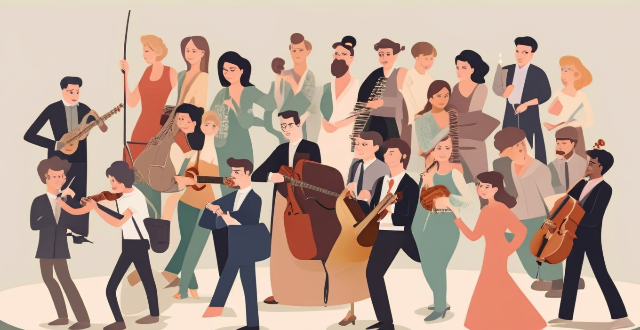
What are the most popular idol groups right now ?
Idol groups have become a significant part of the music industry, with their popularity spanning across different countries and cultures. These groups consist of members who are not only talented singers but also skilled dancers, actors, and models. In this article, we will discuss the most popular idol groups right now: BTS (Bangtan Boys), TWICE, and Blackpink.
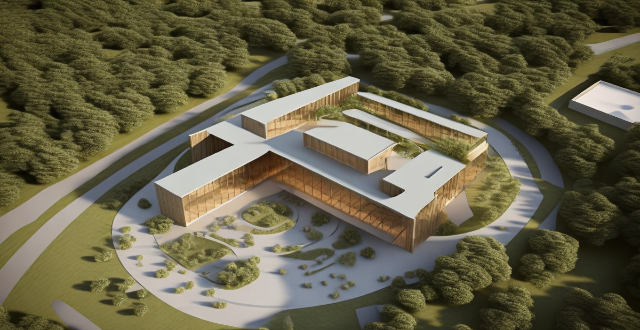
How can I increase viewer interaction in my online broadcasts ?
Increasing viewer interaction is crucial for online broadcasters to build a loyal fan base and improve engagement. Strategies include engaging with the audience through live chat, polls, and Q&A sessions; incorporating interactive games, collaborations, and guest appearances; using visually appealing graphics and custom overlays; building a community through fan groups and contests; and encouraging viewer participation by showcasing their content.

How can fans get involved in their favorite celebrity's charity work ?
Fan involvement in a favorite celebrity's charity work can take many forms, from direct donations to volunteering time and skills, spreading awareness, participating in challenges, collaborative projects, and staying updated on the charity's activities. These actions not only support the causes championed by celebrities but also foster a deeper connection between fans and the stars they admire.

What are some innovative ways sports event organizers have used to engage fans and increase revenue ?
Innovative Ways Sports Event Organizers Engage Fans and Increase Revenue Sports event organizers are always looking for innovative ways to engage fans and increase revenue. This is crucial for the success of their events, as it ensures high attendance rates and maximizes profits. Some of the most effective strategies that have been implemented in recent years include interactive experiences like virtual reality (VR) and augmented reality (AR), mobile apps with live streaming and social media integration, enhanced stadium experiences with Wi-Fi connectivity and unique concessions, ticket pricing strategies like dynamic pricing and season tickets/membership programs, and marketing initiatives like sponsorships/partnerships, targeted advertising, and influencer collaborations. By continuing to explore new ideas and technologies, sports event organizers can ensure the continued growth and success of their events.